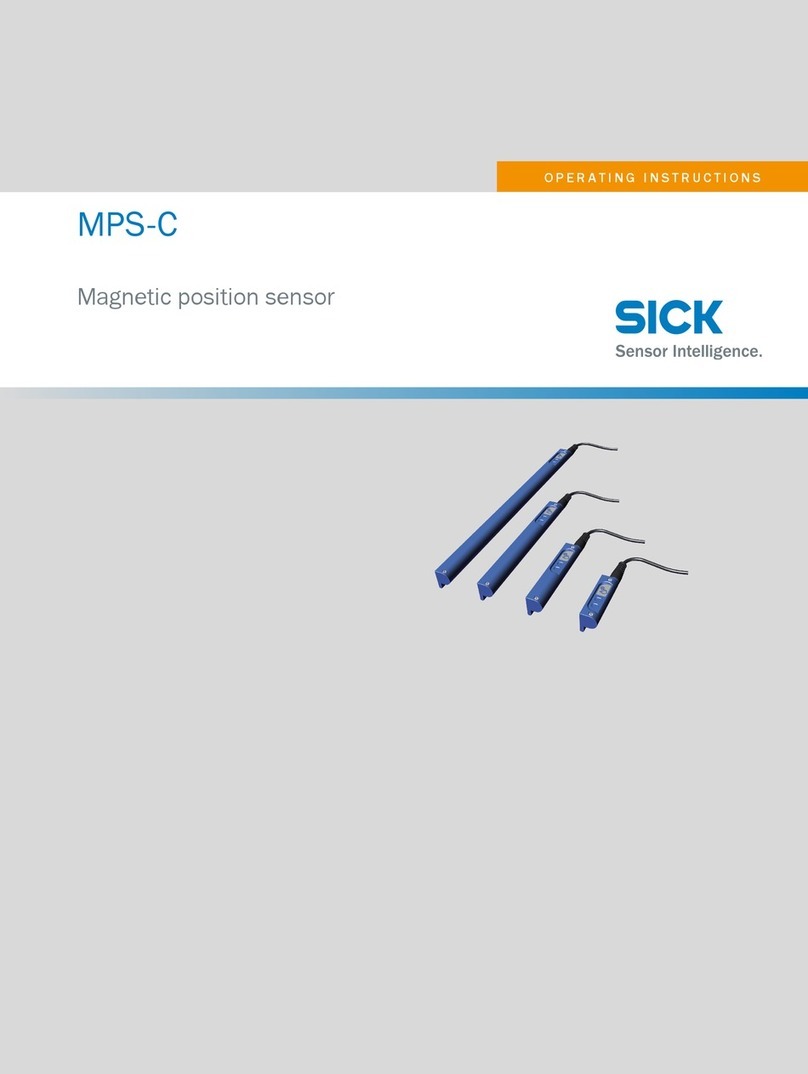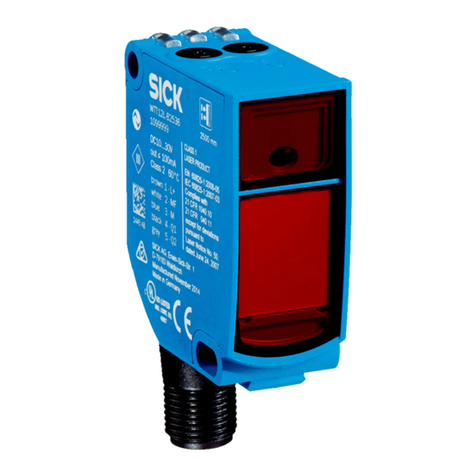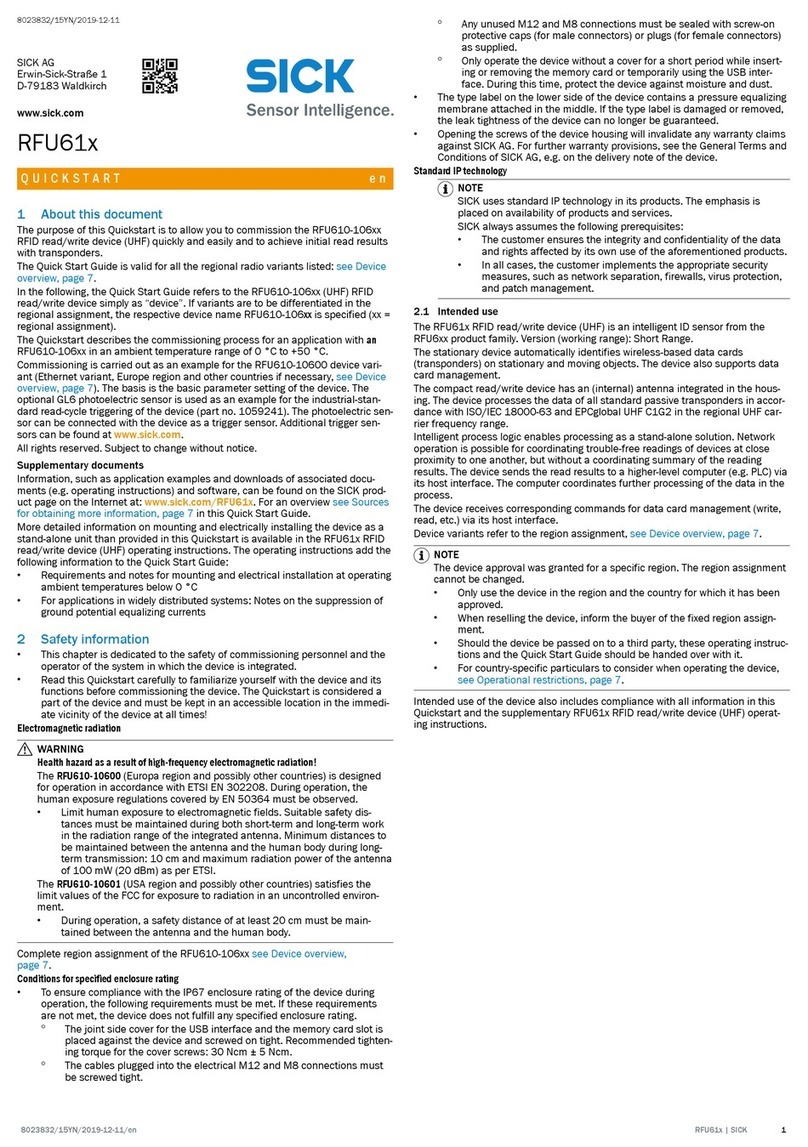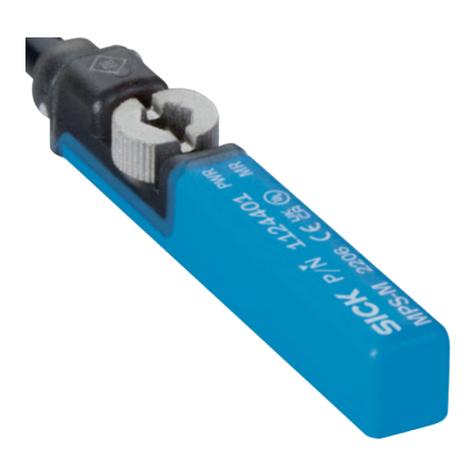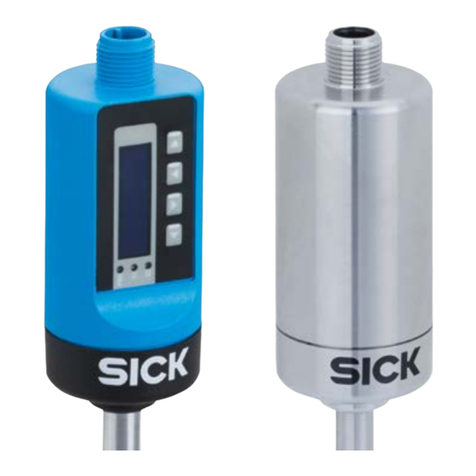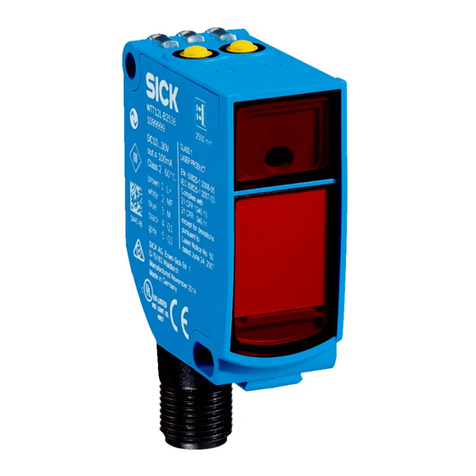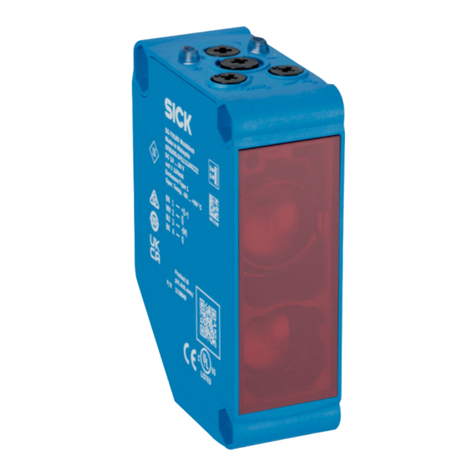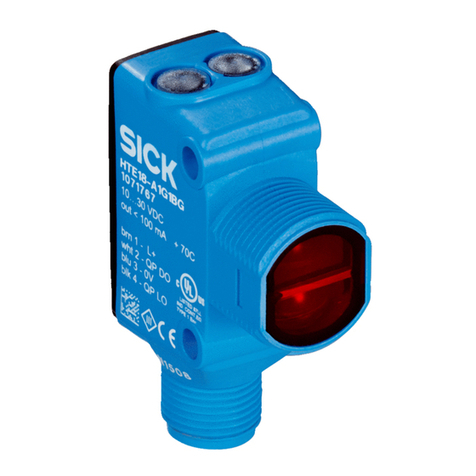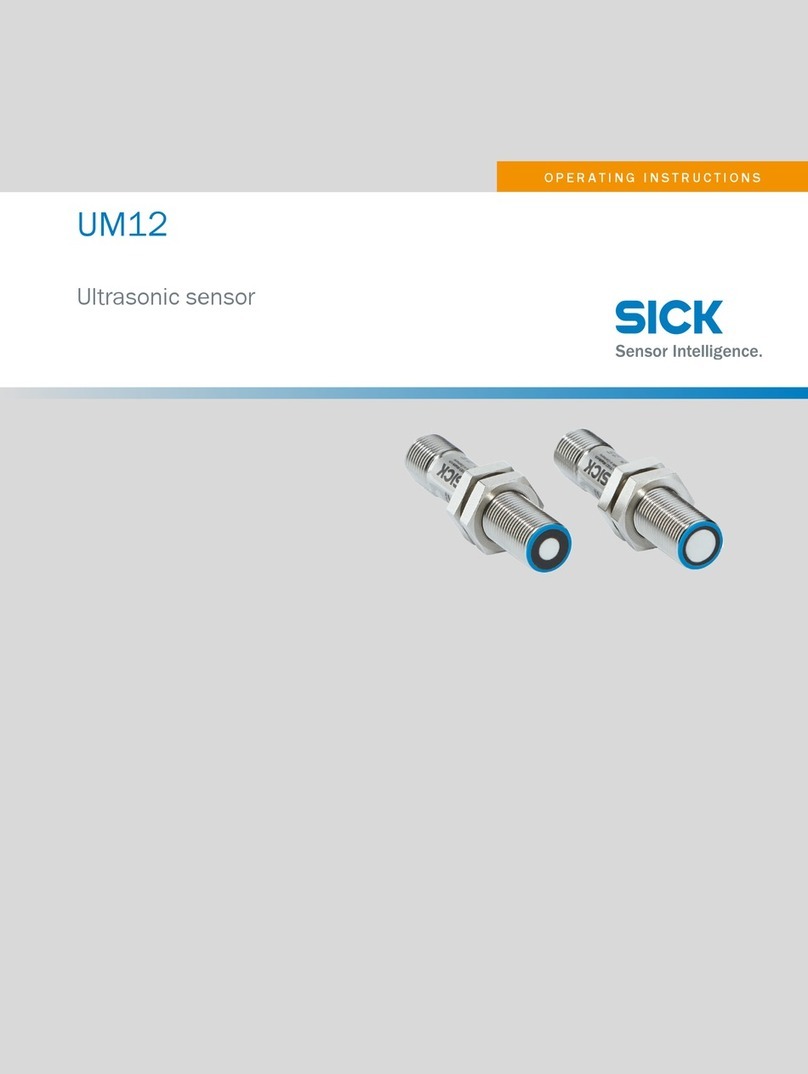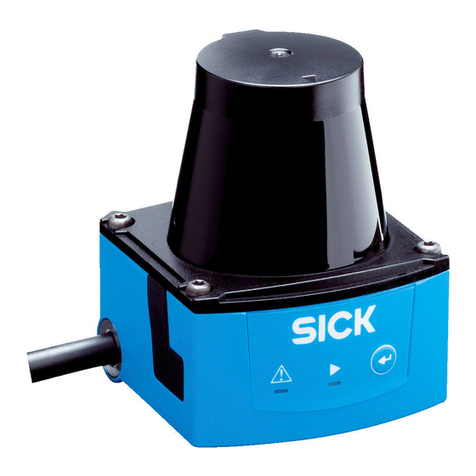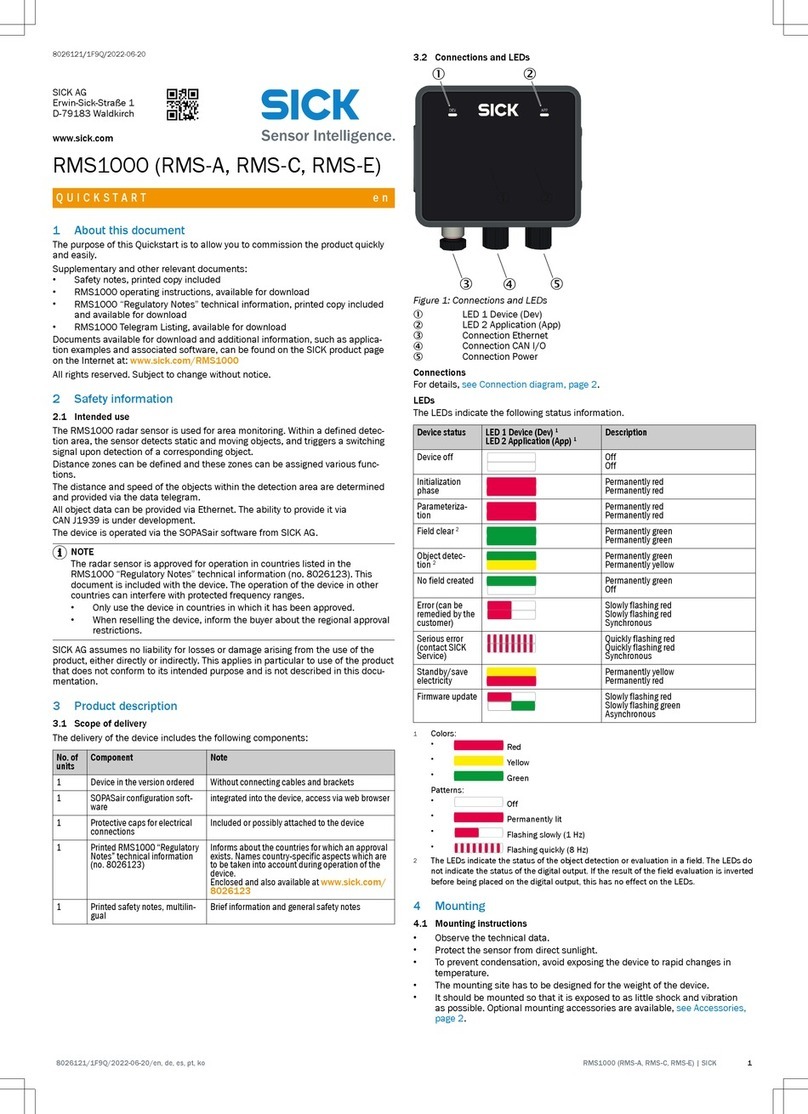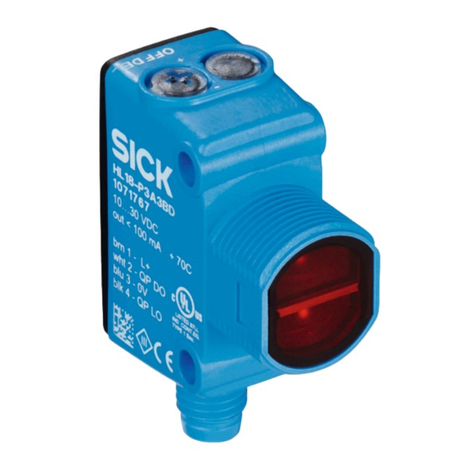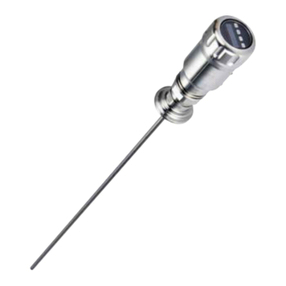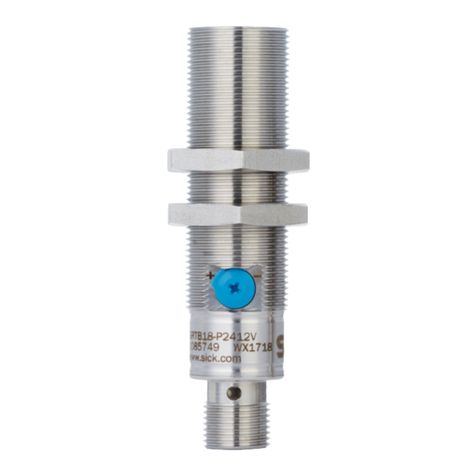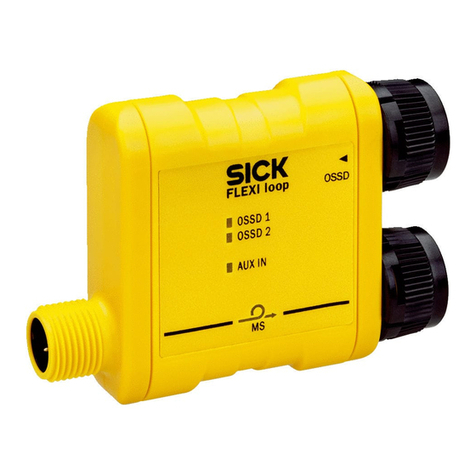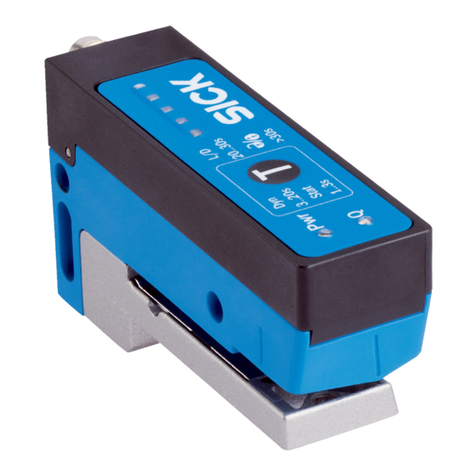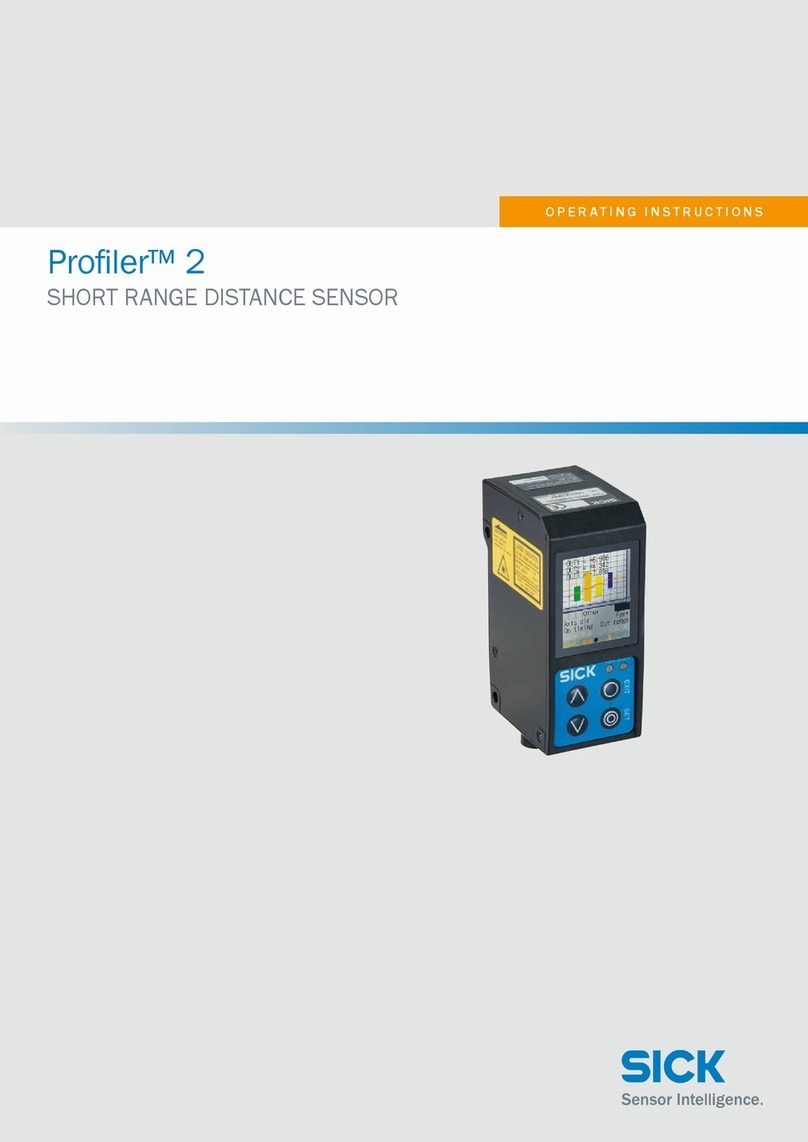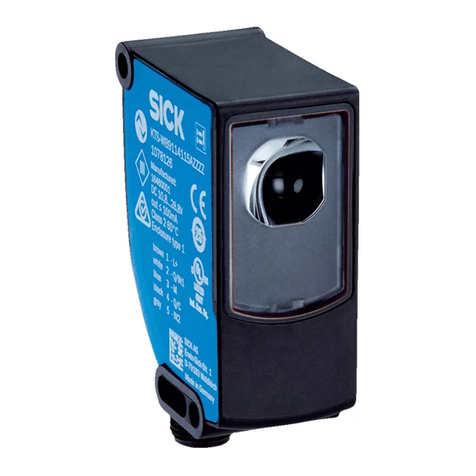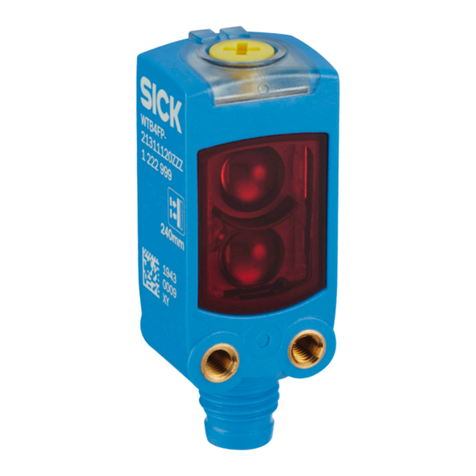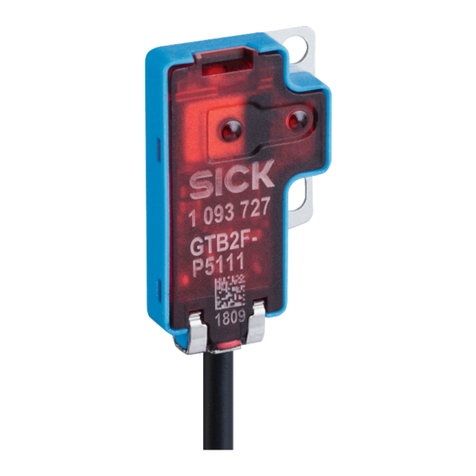
Test input
Test input: the WT34-B / -V sensors feature a test input (“TI” or “Test” on the connec‐
tion diagram [see "WT34-Bxxx, WT34-Vxxx", page 7 and see table 7]), which can be
used to switch the sender off and, therefore, check that the sensor is functioning cor‐
rectly: if female cable connectors with LED indicators are used, you have to ensure that
the TI is assigned accordingly.
If an object is detected, activate the test input (see the connection diagram [see
"WT34-Bxxx, WT34-Vxxx", page 7 and see table 7], PNP: TE → M). The send LED is shut
down or no object being detected is simulated. Use the following table to check the
function. If the switching output fails to behave in accordance with the following table,
check the application conditions. See section Fault diagnosis.
Table 7: Test
Test
8 Commissioning
1Alignment
WT34-Xx4x, -Xx5x: align sensor on object. Select the position so that the red emitted light
beam hits the center of the object. You must ensure that the optical opening (front screen)
of the sensor is completely clear [see figure 3 and figure 4].
WT34-Xx1x, -Xx2x: align sensor on object. Select the position so that the infrared light (not
visible) hits the center of the object. The correct alignment can only be detected via the
LED indicators. See figure 3 and figure 4. You must ensure that the optical opening (front
screen) of the sensor is completely clear.
Figure 3: Alignment Figure 4: Alignment 2
2Sensing range
7 ADDITIONAL FUNCTIONS
10 8009202.11O1 | SICK
Subject to change without notice
